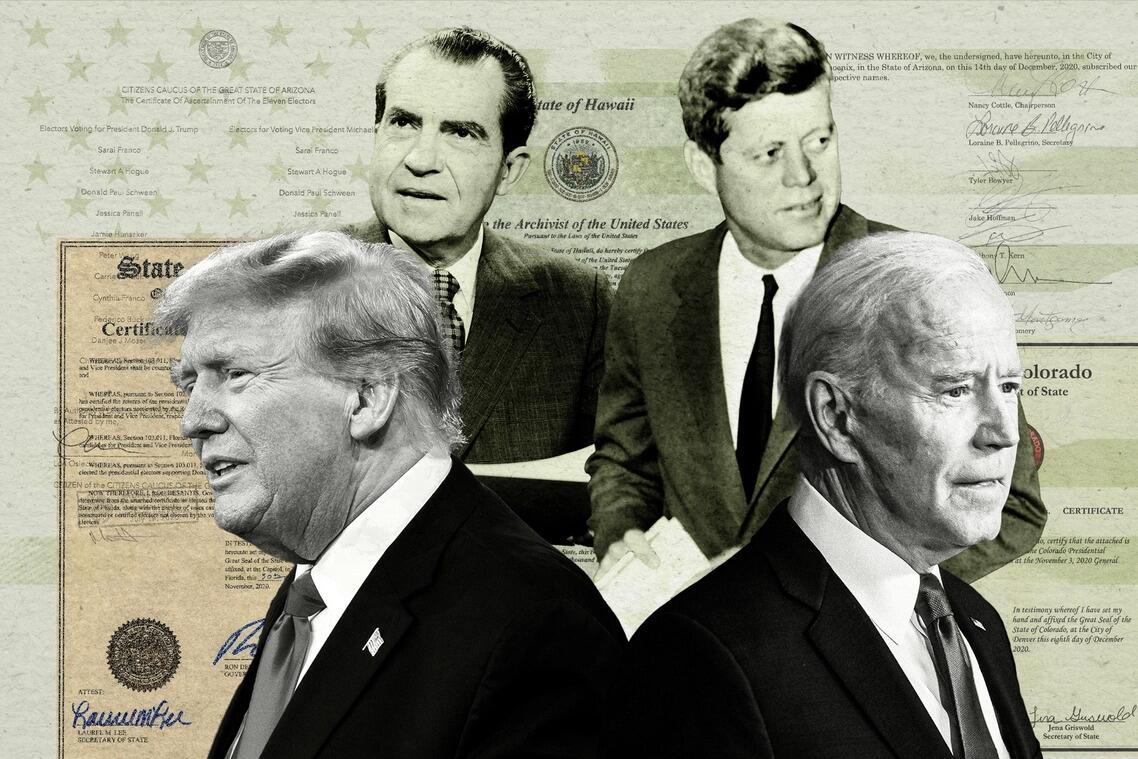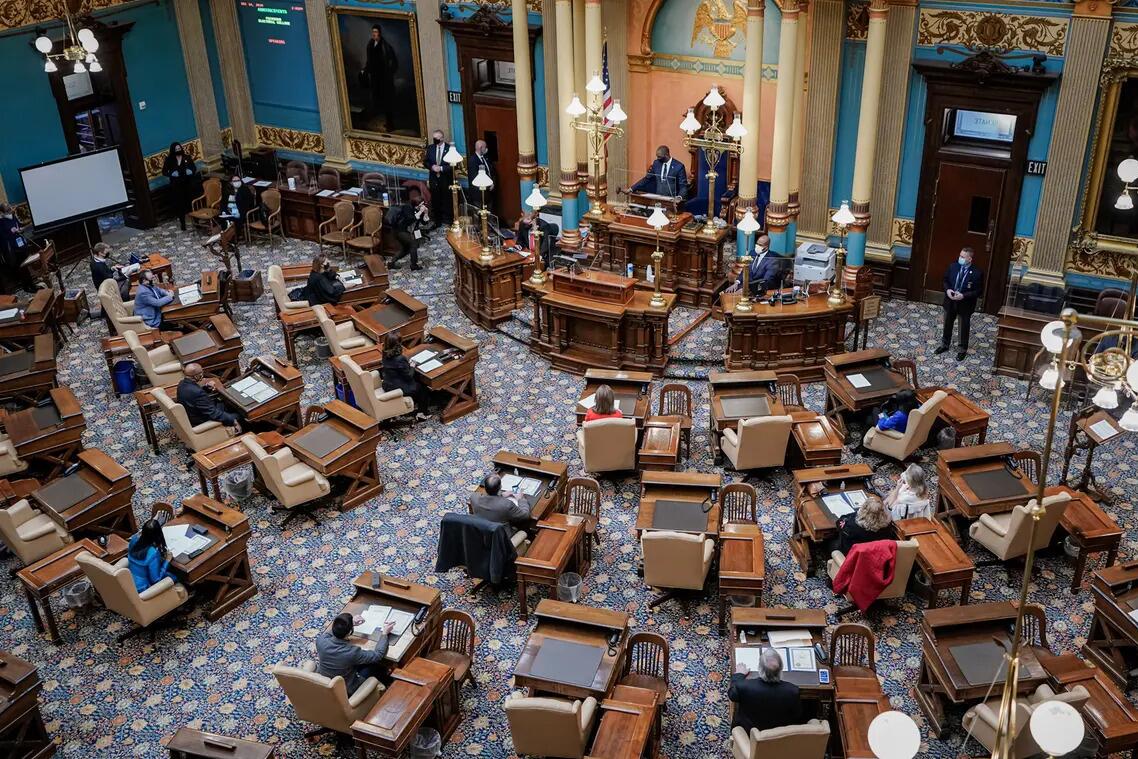Why 1960 Alternate Electors Succeeded Where 2020 Ones Failed
Authored by Lawrence Wilson via The Epoch Times (emphasis ours),
A November election decades ago produced a clear winner in a hotly contested presidential race. Yet the popular vote immediately came under scrutiny in several states. In one, auditors discovered clear errors in tabulating vote totals. In others, credible evidence of election fraud was uncovered.

With a court challenge underway, electors from both parties met at a state capitol and conducted the electoral vote. Two certifications were forwarded to Washington, one declaring the Democratic candidate to be the victor, the other naming the Republican.
The Republican vice president—also a candidate in the race—convened a joint session of Congress on Jan. 6. Without fanfare, he moved to accept the Democratic slate of electors and set the Republican electors aside.
So ended the presidential election of 1960.
The state in question was Hawaii. The vice president was Richard Nixon, who ran against Democrat John F. Kennedy, and would have won if as few as 11,000 votes spread over five battleground states had gone the other way.
Sixty years later, history nearly repeated itself as Republican electors from seven states sent alternative electoral certifications to Washington amid allegations of election fraud.
This time the alternate slates were rejected. On Jan. 6, 2021, in a joint session presided over by Republican Vice President Mike Pence, also a candidate in the race, Congress certified Democratic candidate Joe Biden the winner over President Donald Trump.
Many Americans have no memory of the 1960 election, and few are likely aware of the striking similarities between it and the 2020 election. The Hawaii election provided the rationale for the alternate elector plan promoted by some associates of President Trump following the 2020 election.
Since last year, criminal prosecutions have been levied against Republicans who took part in the plan in Michigan, Georgia, Nevada, New Mexico, and Arizona. President Trump is facing related charges in a Washington federal court.
The two elections have much in common, yet the cases exhibit key differences that spelled success for the alternate electors in 1960 and defeat in 2020.
Recount in Progress
The first tally of votes in Hawaii during the 1960 election showed Kennedy had won by 92 votes. After a second tabulation of the totals—not a recount of the ballots themselves—Nixon led by 141 votes.
Democrats petitioned a state circuit court for a recount. But Republican Lt. Gov. James Kealoha, who was acting governor at the time, had no legal authority to reopen the ballots or invalidate the results. So he certified Nixon as the winner.

After an initial audit, a judge ordered a full recount of the state’s ballots on Dec. 13, 1960, just six days before the electoral vote.
That court order was crucial to the success of Hawaii’s dual elector plan because it placed the outcome of the popular vote in legal limbo. While a winner had been certified, a state court had taken action that might lead to a different result.
Lawsuits were also filed to challenge aspects of the 2020 election. One was pending in Georgia, and one remained under appeal in Michigan, though the Michigan Supreme Court refused to halt certification of the popular vote on Dec. 9, 2020.
However, there was no court order in any state and no action by a state legislature to mandate a recount or to delay the certification of the election.
State-Certified Electors
In 1960 the ongoing recount created a dilemma for Hawaii’s acting governor. If only the Republican electors voted, Nixon would carry Hawaii even if Kennedy was later found to have won the most votes.
Yet federal law establishes the date for the electoral vote as “the first Monday after the second Wednesday in December” following the election. If there were no vote on Dec. 19, 1960, the brand-new state of Hawaii would miss out on its first presidential election.
So with the recount in progress, both sets of Hawaii electors met at Iolani Palace, the seat of the Hawaiian government. They voted for their respective candidates one minute apart. Kealoha signed two certificates of ascertainment and sent them to Washington.
A certificate of ascertainment states the elector candidates pledged to a presidential candidate and the total number of votes received. The electors for the candidate who received the most votes are “elected” as presidential electors from their state.
A separate document, the electoral ballot, states the outcome of the electoral vote for that state.
The certificate of ascertainment is a second important difference between the 1960 and 2020 cases.
To be sure, some of the 2020 electors knew about the Hawaii case and used it as a rationale for their efforts. The Pennsylvania Republican Party issued a press release stating as much.
“Today’s move by the Republican Party electors is fashioned after the 1960 Presidential election, in which President Nixon was declared the winner in Hawaii,” the Dec. 14, 2020, release stated.

“While Democrat legal challenges were pending, Democratic presidential electors met to cast a conditional vote for John F. Kennedy to preserve their intent in the event of future favorable legal outcomes.”
In 2020, Republican electors in Pennsylvania and New Mexico added conditional language to their vote certifications, saying they were filed “on the understanding that it might later be determined that we are the duly elected and qualified Electors for President and Vice President of the United States of America” from their respective states.
Read the rest here...
NEVER MISS THE NEWS THAT MATTERS MOST
ZEROHEDGE DIRECTLY TO YOUR INBOX
Receive a daily recap featuring a curated list of must-read stories.


